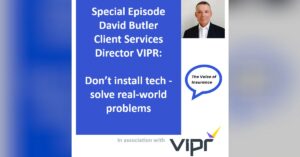Should Medicaid recipients worry about losing their coverage in 2022? – healthinsurance.org – Health Insurance Resource Center

The COVID-19 pandemic has cast a spotlight on the importance of the various safety net systems that the U.S. has in place. Medicaid is a prime example: As of July 2021, enrollment in Medicaid/CHIP exceeded 83.6 million people, with more than 12 million new enrollees since early 2020.
This enrollment growth — more than 17% in 17 months — is obviously tied to the widespread job and income losses that affected millions of Americans as a result of the COVID pandemic. Fortunately, Medicaid was able to step in and provide health coverage when people lost their income; without it, millions of additional Americans would have joined the ranks of the uninsured. We didn’t see that happen in 2020, thanks in large part to the availability of Medicaid and CHIP.
But the continued enrollment growth in Medicaid is primarily due to the fact that the Families First Coronavirus Response Act (FFCRA), enacted in March 2020, provides states with additional federal funding for their Medicaid programs, as long as they don’t disenroll people from Medicaid during the COVID public health emergency (PHE) period. And all states accepted the additional federal Medicaid funding.
So while there is normally quite a bit of turnover in the Medicaid program — with some people losing eligibility each month — enrollment has trended upward for nearly two years, without the normal disenrollments that were routine prior to the pandemic.
The end of public health emergency could mean disenrollment for millions who have Medicaid coverage
But the PHE will eventually end — possibly in mid-April — and millions of Americans could lose their Medicaid coverage soon thereafter. There are very real concerns that many people who are actually still eligible for Medicaid might lose their coverage due to onerous paper-based eligibility redetermination systems.
We’re hopeful that states will work to make the redeterminations and renewals process as transparent, accurate, and simple as possible. But our goal today is to help you understand what you need to know in order to maintain coverage if you’re one of the millions of people who could potentially lose Medicaid eligibility in the coming months.
When will Medicaid eligibility redeterminations happen?
The federal PHE was first declared in March 2020, and most recently extended in January 2022. The extensions are valid for 90 days at a time, and the PHE is currently scheduled to continue through April 16, 2022. At this point, nobody knows whether the PHE will be extended again. It will depend on the state of the pandemic at that point, and we’ve all seen how quickly the COVID tide can turn.
But the Biden administration informed governors in early 2021 that HHS would give states 60 days notice prior to letting the PHE terminate, so that they can begin planning for the substantial work that will be involved with a return to normal Medicaid operations.
After the month that the PHE ends, states have up to 12 months to complete eligibility redeterminations based on members’ changed circumstances, as well as pending eligibility verifications and renewals (this timeframe was initially set at six months as of late 2020, but as the pandemic dragged on and states’ backlog of suspended eligibility redeterminations grew, the Biden administration extended it to 12 months).
But regardless of how quickly a state opts to start redetermining eligibility and disenrolling people who are no longer Medicaid eligible, the additional federal Medicaid funding will only continue through the end of the quarter in which the PHE ends. As of the start of the next quarter, states will revert to receiving their normal federal Medicaid funding. This does incentivize states, to some extent, to process eligibility redeterminations quickly.
For a person who is no longer Medicaid-eligible under normal rules, Medicaid coverage can end as early as the end of the month that the PHE ends. So if the PHE ends in April, some people will lose their Medicaid coverage at the end of April. But the overall pace of Medicaid eligibility redeterminations and disenrollments will vary considerably from one state to another in the months after the PHE ends.
How many people will lose Medicaid coverage when the public health emergency ends?
An Urban Institute analysis published in September 2021 projected that up to 15 million people could lose Medicaid coverage in 2022. And that was based on an assumption that the PHE would continue only through the end of 2021.
We now know that it will continue through at least mid-April 2022, and each additional month adds to the backlog of renewals and eligibility redeterminations that have been growing since March 2020.
What are your coverage options if you lose your Medicaid?
If you’re still eligible for Medicaid under your state’s rules, you’ll be able to keep your coverage. You may have to submit documentation to the state to prove your ongoing eligibility, so pay close attention to any requests for information that you receive.
Many states have continued to send out these renewal notifications and information requests throughout the pandemic. They could not disenroll people who didn’t respond or whose data indicated that they were no longer eligible, but they will be able to start terminating coverage for those individuals once the PHE ends. But if you’ve recently submitted renewal information to your state and it’s clear that you’re still eligible, your coverage will continue as usual until your next renewal period.
If you no longer meet your state’s Medicaid eligibility guidelines, it’s a good idea to understand what your options will be once the PHE ends and your state begins disenrolling people who aren’t Medicaid eligibility.
Can you appeal your state’s decision to disenroll you from Medicaid?
If your state notifies you that you’re no longer eligible for Medicaid and you believe that you are still eligible, you can appeal the state’s decision. (Be prepared to provide proof of your ongoing eligibility under your state’s Medicaid rules.)
What are your options if you’re no longer eligible for Medicaid?
What if your income has increased to a level that’s no longer Medicaid-eligible? Or maybe your circumstances have changed — perhaps your income is the same but you have fewer people in your household and your income now puts you at a higher percentage of the poverty level. There are millions of people who became eligible for Medicaid at some point since March 2020, and are still enrolled in Medicaid even though they would not be determined eligible if they were to apply today.
For those individuals, there will generally be two primary options for post-Medicaid coverage: An employer-sponsored plan, or a plan obtained in the health insurance exchange/marketplace. According to the Urban Institute’s analysis, about a third of the people losing Medicaid will be eligible for premium tax credits (subsidies) in the marketplace, while about two-thirds will be eligible for employer-sponsored coverage that meets the ACA’s definition of affordable (note that some of those people might not have access to coverage that’s actually affordable, due to the family glitch).
Most of the people who will become eligible for marketplace subsidies will be adults, as the majority of the children who transition away from Medicaid will be eligible for CHIP instead. (Children are always much less likely than adults to qualify for marketplace subsidies. That’s because Medicaid and CHIP eligibility for children extend to significantly higher income ranges, and marketplace subsidies are never available if a person is eligible for Medicaid or CHIP.)
What should you do if you currently have Medicaid coverage?
If you’re currently enrolled in Medicaid, it’s a good idea to familiarize yourself with your state’s eligibility rules, and figure out whether you’d be eligible if you were to apply today, with your current circumstances and income.
If the answer is yes, be sure you pay close attention to any requests for additional information from your state’s Medicaid office, as they may need that in order to keep your coverage in force.
But if the answer is no, be prepared for a coverage termination notice at some point after the PHE ends.
Here’s what you need to keep in mind for that:
If you have access to an employer-sponsored health plan, your loss of Medicaid coverage will trigger a special enrollment period that will allow you to enroll in the employer-sponsored plan. This window is only required to be 30 days, so don’t put this off.
If you do not have access to an employer-sponsored health plan, you can apply for a premium tax credit (subsidy) to offset the cost of coverage in the health insurance marketplace in your state. Depending on your income, you might also qualify for cost-sharing reductions (CSR), which will make your out-of-pocket costs more affordable as long as you select a Silver-level plan (you can use premium subsidies with plans at any metal level, but CSR benefits only come with Silver plans).
The window to enroll in a marketplace plan will start 60 days before your Medicaid coverage ends, and will continue for 60 days after it ends. But in order to have seamless coverage, you’ll need to submit your application before your Medicaid ends. Your new marketplace plan cannot have a retroactive effective date and won’t take effect until at least the first of the month after you apply. So you’ll have a gap in coverage if you submit your marketplace application after your Medicaid coverage has terminated.
The subsidies that are currently available in the marketplace are particularly generous, thanks to the American Rescue Plan, and you might be pleasantly surprised to see how affordable the coverage will be. The enhanced subsidies (ie, even better than the Affordable Care Act’s original subsidies) will remain in place through the end of 2022 — and Congress might extend them for future years (even if they don’t, the regular ACA subsidies will continue to be available after 2022).
The main point to keep in mind is that the opportunity to transition to new coverage, from an employer or through the marketplace, is time-limited. If you miss your special enrollment period, you’ll have to wait until the next annual open enrollment period to sign up for coverage (in the individual market, that starts November 1; employers set their own enrollment windows).
New special enrollment period for low-income enrollees
There is a new special enrollment period that allows people with household income up to 150% of the poverty level to enroll in coverage year-round, for as long as the enhanced subsidies remain in place (so at least through the end of 2022, and possibly longer).
For people whose income has increased enough to make them ineligible for Medicaid, but still eligible for this special enrollment period, there will be more flexibility in terms of access to coverage. But although HHS finalized this special enrollment period in September 2021, it won’t be available on HealthCare.gov (and enhanced direct enrollment partner websites) until late March 2022 (it’s available prior to that for people who call the HealthCare.gov call center and enroll via phone). The new low-income special enrollment period is optional for the 18 state-run exchanges, although several of them had already made it available as of February (Colorado, Pennsylvania, New Jersey, California, Maine, and Rhode Island). More are likely to follow suit once it debuts on HealthCare.gov.
But it’s still in your best interest to submit an application as soon as possible, even after the new low-income special enrollment period becomes widely available. Free or nearly free coverage will be available in the marketplace for people eligible for this special enrollment period (this is a result of the American Rescue Plan’s subsidy enhancements). And since coverage cannot be backdated, it’s essential to ensure that you’re covered before any medical needs arise.
So the best course of action is to simply enroll in a marketplace plan as soon as you know that your Medicaid coverage will be terminated (assuming you don’t have access to an employer-sponsored plan), in order to avoid any gap in coverage. This is true regardless of whether you’ll qualify for the new low-income special enrollment period, since you’ll have a normal loss-of-coverage special enrollment period when your Medicaid ends, and you can take advantage of it right away.
Don’t panic: Coverage is almost certainly available
The impending termination of the PHE and return to business-as-usual for Medicaid can be a nerve-wracking prospect for some enrollees. Many people who enrolled in Medicaid since early 2020 have never experienced the regular eligibility redeterminations and renewal processes that have long been a part of Medicaid, and those will resume once the PHE ends.
The primary things to keep in mind: Your Medicaid coverage will continue if you continue to meet the eligibility guidelines and submit any necessary documentation as soon as it’s requested by the state. And if you’re no longer eligible for Medicaid, you’re almost certainly eligible for an employer-sponsored plan or a subsidized plan in the marketplace. Don’t panic, but also don’t delay, as your opportunity to enroll in new coverage will likely be time-limited.
Louise Norris is an individual health insurance broker who has been writing about health insurance and health reform since 2006. She has written dozens of opinions and educational pieces about the Affordable Care Act for healthinsurance.org. Her state health exchange updates are regularly cited by media who cover health reform and by other health insurance experts.



